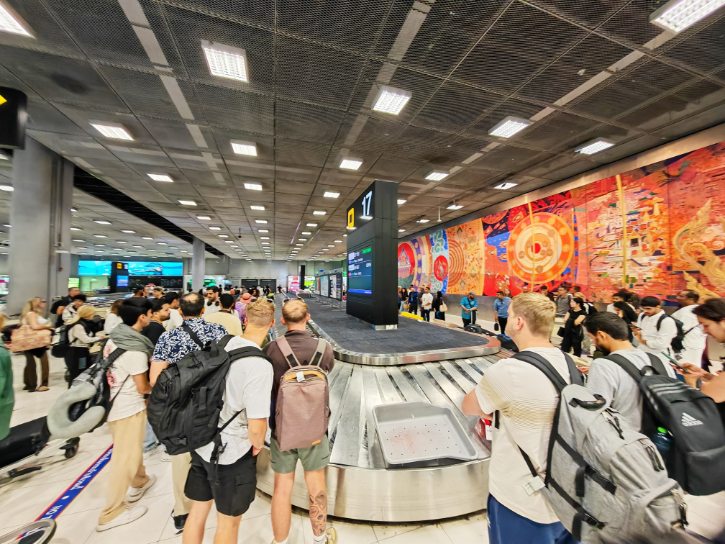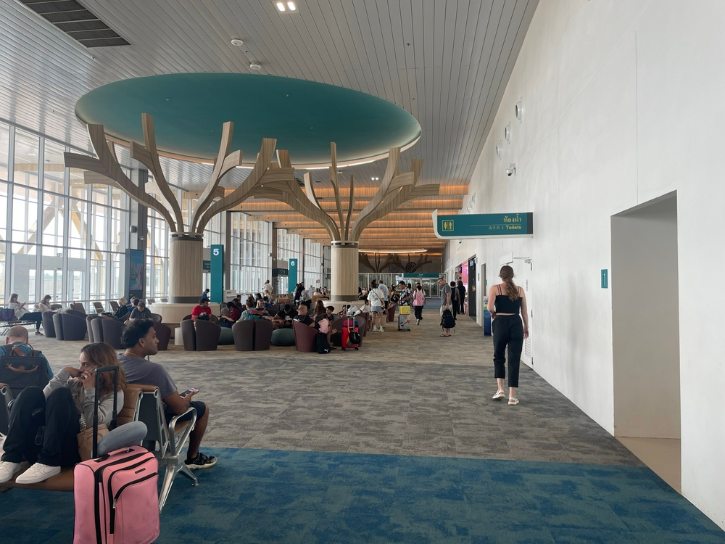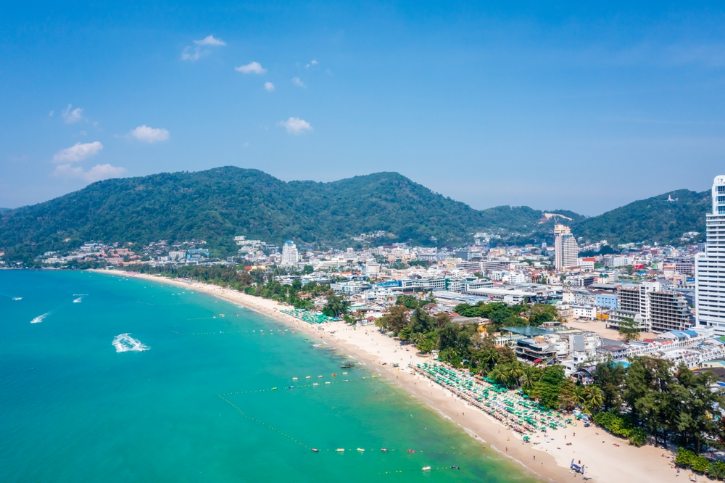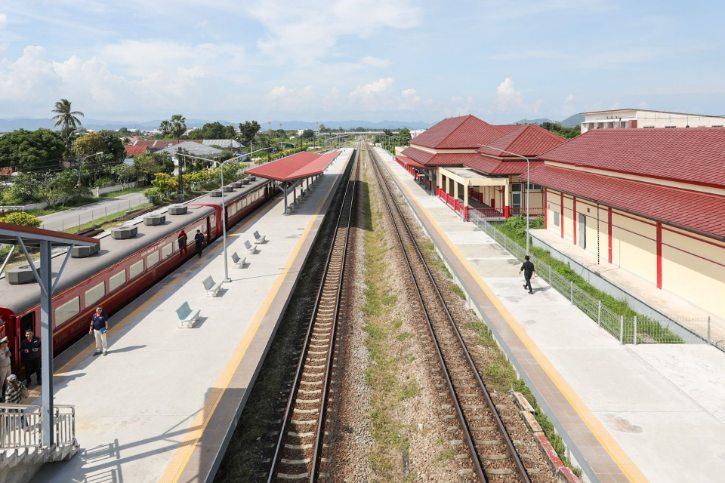
Planning a trip to Thailand in 2025 or 2026?
A few important changes are happening soon, and some updates might affect how you travel, move around cities, or plan your budget.
The good news is that most updates make travel smoother, while others are still only proposals.
Here’s a simple guide to help you stay prepared and enjoy your trip with confidence. I hope it makes you feel a bit more ready before you go. 😊
1. Thailand May Reduce Visa-Free Stay from 60 to 30 Days

a. What’s Being Proposed
The government is reviewing whether to reduce the visa-free stay from 60 days back to 30 days. This would reverse a tourist-friendly policy that started in July 2024.
b. Current Status (Still Under Review)
Important: The 60-day visa-free policy is still in effect. This is just a proposal being discussed, not an active change.
c. Why the Government Is Reconsidering
Security agencies worry some visitors are using the 60-day stay to work illegally or run businesses without permits. They argue most tourists only stay 2-3 weeks anyway.
d. Why It Doesn’t Affect Travelers Yet
For now, citizens from 93 countries still get 60 days visa-free on arrival. Continue planning your trips normally.
e. What Might Happen if the Proposal Passes
If changed, you’d get 30 days on arrival but could still extend for another 30 days at an immigration office for 1,900 baht. It adds paperwork but doesn’t block longer stays.
f. Practical Advice for Travelers Planning Longer Trips
My advice? Monitor official Thai immigration announcements before traveling.
If you’re planning to stay over 30 days, be prepared with proof of onward travel and accommodation, just in case rules change suddenly.
Remember, Thailand’s visa policies tend to swing between tourist-friendly and security-focused every few years. Stay flexible with your plans.
2. Higher Passenger Fees at Six Regional Airports

a. What Changed
Starting October 1, 2025, six regional airports in Thailand raised their passenger service charges by 25 baht.
International travelers now pay 425 baht (up from 400 baht), while domestic passengers pay 75 baht (up from 50 baht).
Don’t worry, you won’t need to pull out cash at the airport. This fee is automatically included in your ticket price when you book.
b. Which Airports Are Affected
The six airports with higher fees are:
- Krabi (KBV)
- Surat Thani (URT)
- Ubon Ratchathani (UBP)
- Khon Kaen (KKC)
- Nakhon Si Thammarat (NST)
- Phitsanulok (PHS)
c. When the New Fees Apply
The higher fees kicked in on October 1, 2025. Airlines started collecting them on tickets purchased from July 1, 2025, for any travel after October.
d. What This Means for Travelers
It’s a minor cost increase, honestly. The extra 25 baht (less than $1 USD) is bundled into your airfare, so there’s nothing extra to do or pay at the airport.
e. Tips for Avoiding Confusion (What Is Not Affected)
Here’s the important part: major airports like Bangkok’s Suvarnabhumi (BKK), Don Mueang (DMK), Phuket (HKT), and Chiang Mai (CNX) are NOT affected. These busy hubs have their own fee structure that hasn’t changed.
f. Why Thailand Introduced This Change
The money goes toward upgrading these airports with modern tech like self-service kiosks and automated baggage drops. You’re essentially helping fund better facilities for future visits.
3. Bangkok Trains Now Accept Contactless Payments

a. What’s New and Why It Matters
This is fantastic news for tourists! You can now tap your Visa or Mastercard directly at the gate on most Bangkok train lines, including the Airport Rail Link from Suvarnabhumi Airport.
No more fumbling with ticket machines or exchanging money right after your flight lands.
b. Lines That Accept EMV Contactless Cards
These lines now accept tap-and-go payment:
- Airport Rail Link (ARL)
- MRT Blue Line (subway)
- MRT Purple, Yellow, and Pink Lines
- SRT Red Line
c. The Key Exception: BTS Skytrain
Here’s where it gets tricky. The BTS Skytrain does NOT accept contactless bank cards. This is the main tourist line running through Sukhumvit and Silom.
Trust me, this catches everyone off guard.
d. How the Mixed System Affects Tourists
Picture this: You tap your credit card on the Airport Rail Link, transfer smoothly to the MRT Blue Line, then try to switch to the BTS at Asok station. Your card won’t work. You’ll need to exit and buy a separate BTS ticket.
It’s frustrating, but now you know to expect it.
e. Practical Tips for Smooth Transfers
My advice? Use your contactless card for the airport train and MRT lines. For the BTS, either buy single tickets or grab a Rabbit Card (their stored-value card) if you’ll be riding frequently.
Keep some cash handy for BTS tickets.
f. Who Should Still Get a Rabbit Card
Get a Rabbit Card if you’re:
- Staying near a BTS station
- Planning multiple BTS rides daily
- Want to avoid ticket lines during rush hour
4. Phuket Introduces a New “Boat Taxi” Service

a. What the Boat Taxi Is
Phuket is testing speedboat taxis to help tourists skip the island’s notorious traffic jams.
These boats will connect beaches along the west coast, potentially saving you hours during peak season.
b. Trial Timeline and Current Status
The service is running a trial from December 15-30, 2025. It’s not permanent yet, so don’t count on it being available when you visit.
c. Planned Routes and Travel Time
The trial route connects Nai Yang Beach (near the airport) to Patong Beach in about 40 minutes. That same trip can take few hours by road when traffic is bad.
Future plans include 14 stops at major beaches like Kata, Karon, and Kamala.
d. Why It Could Be a Game-Changer for Tourists
Imagine landing at Phuket Airport and reaching Patong Beach in 40 minutes instead of sitting in traffic. During high season, this could transform how you hop between beaches.
e. Important Limitations to Know
The boats only run during calm season (November to April). Don’t expect service during monsoon months when the seas get rough.
The trial is using temporary floating piers, so logistics for luggage aren’t fully sorted yet.
5. Faster Train Travel to Southern Thailand

a. What’s Now Operational
Thailand has completed double-track rail lines from Bangkok to Chumphon, covering 421 kilometers.
Trains no longer wait for oncoming traffic on single tracks, making journeys much faster and more reliable.
b. How the Upgrade Improves Travel for Tourists
Your trip to Hua Hin or Prachuap Khiri Khan is now significantly quicker.
Trains run on schedule more often, and the railway has launched new tourist-focused services with comfortable, air-conditioned cars.
c. Destinations That Benefit the Most
These popular spots see the biggest improvements:
- Hua Hin (weekend beach getaway)
- Prachuap Khiri Khan (quieter beach town)
- Chumphon (gateway to Ko Tao, Ko Phangan, and Ko Samui ferries)
d. What’s Coming Next (Phase 2 Plans)
Future plans include extending double tracks to Surat Thani and Hat Yai, but construction won’t start until 2026 at the earliest.
e. Limitations Travelers Should Know
The upgrades currently stop at Chumphon. Routes to Surat Thani (for Ko Samui ferries) and further south still use older, slower single tracks.
f. Why This Matters for Thailand’s Future Travel Network
This is part of a massive modernization plan that will eventually connect with Malaysia’s rail system. For travelers, it means train travel in Thailand will only get better.
Good to Know: The 300-Baht Tourist Tax Is Delayed Again

a. What Happened to the Tourist Fee
Thailand’s proposed 300-baht tourist entry fee has been postponed again. You won’t pay this fee in 2025 or early 2026.
b. Why It Keeps Getting Postponed
The government worries the fee might discourage budget travelers while tourism is still recovering.
There are also technical problems with airlines collecting the fee, since their systems can’t easily separate foreign tourists from Thai citizens.
c. What This Means for Your Budget
Good news! You don’t need to budget for this extra cost. Your Thailand trip in 2025 and early 2026 won’t include this fee.
d. When (or If) It Might Actually Happen
Officials now say the earliest possible date is mid-2026, but honestly, it’s been delayed so many times that nobody’s holding their breath.

